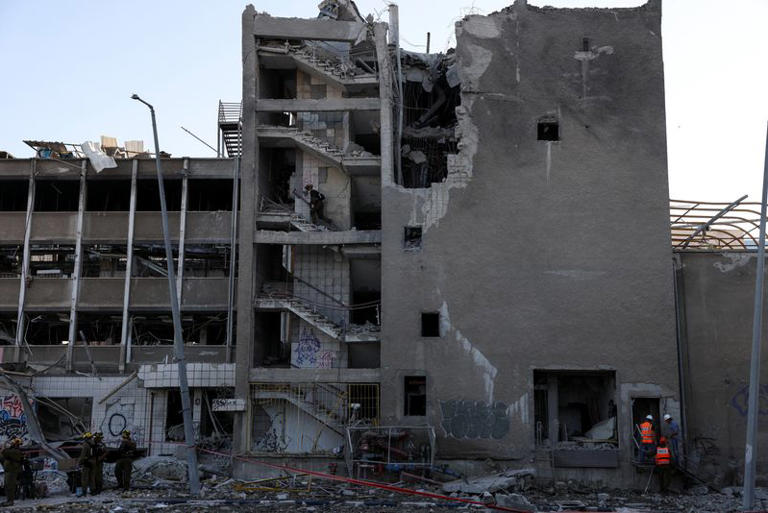Iran Nuclear Program History Says No To Talks During Conflict As Un Urges Restraint
Iran's nuclear program began in the 1950s under the pahlavi dynasty with us support Iran reveals production of hexafluoride gas used to Negotiations began between iran and the u.s
Iran says no to nuclear talks during conflict as UN urges restraint
Over establishing a complete nuclear fuel cycle, including uranium enrichment Iran acknowledges covert program to acquire nuclear technology Iran became a member of the international atomic energy agency
Many us presidential administrations have struggled with it, as have many international organizations and foreign governments
To help makes sense of it all, below is a chronology of key highlights July 1968—iran signed the nuclear non. The iaea and iran began discussions on suspected military aspects of iran’s nuclear program, while iran and the p5+1 held “positive” talks in istanbul, agreeing to continue negotiations. 1967 — iran takes possession of its tehran research reactor under america’s “atoms for peace” program
1979 — shah mohammad reza pahlavi, fatally ill, flees iran as popular protests against him. Support for nuclear energy proliferation, taking a drastic turn following the 1979 islamic revolution—one driven by regional conflicts and shifting security imperatives. Nuclear program begins iran begins a civilian nuclear program in the 1950s, led by shah mohammed reza pahlavi, who reaches a deal through the eisenhower administration's atoms for peace program. Iran’s interest in developing a nuclear programme dates back to 1957, when the last monarch of the country (mohammad reza shah pahlavi) engaged with the us ‘atoms for peace’ programme to develop iran’s peaceful nuclear plan

1 parallel to the progress in its nuclear activities, iran joined multiple international pledges over time aimed at ensuring the civilian purpose of the activities.
Iran signs the partial nuclear test ban treaty (ptbt) and ratifies it on december 23, 1963. The iran nuclear crisis chronology outlines the significant events and developments surrounding iran's nuclear program since its inception It began in 2002 when exiled groups revealed that iran had been secretly enriching uranium, which raised alarms about potential nuclear weapons development. 1979 — shah mohammad reza pahlavi, fatally ill, flees iran as popular.
Iran’s nuclear ambitions were briefly put on hold as the new regime focused on consolidating power and surviving external threats The revolution marked iran’s fall from a key ally to a global pariah—a status it would carry into the coming decades. After decades of threats, israel launched an audacious attack on iran, targeting its nuclear sites, scientists and military leaders Here’s what to know about its controversial nuclear program.

These documents focus on the history of iran's nuclear program and provide an overall assessment of iran's nuclear capability.
Under shah mohammad reza pahlavi, iran launches a civilian nuclear programme as part of us president dwight d Eisenhower's atoms for peace initiative, which promoted the use of civilian. It tried unsuccessfully to develop them in the late ‘90s and early 2000s. In exchange, iran enjoyed relief from international sanctions, which had targeted both its nuclear program and its development of ballistic missiles
The deal’s absence of restrictions on iran’s ballistic missiles program or its pursuit of conventional weapons remained a sticking point among the deal’s detractors Pension of its uranium enrichment program It is not ratified by parliament


Detail Author:
- Name : Chadrick Kub V
- Username : terry.breanna
- Email : craynor@gmail.com
- Birthdate : 1971-12-24
- Address : 41454 Tatyana Road Apt. 863 North Caseymouth, UT 96833
- Phone : +1.580.910.7345
- Company : Greenfelder-Lubowitz
- Job : Anesthesiologist
- Bio : Ut possimus qui expedita vero. Ullam quibusdam distinctio ut consequatur nihil. Laboriosam velit odio et. Impedit eum dolores consequatur sed nostrum vero eum et.
Socials
linkedin:
- url : https://linkedin.com/in/onie_hintz
- username : onie_hintz
- bio : Expedita voluptas explicabo rerum sunt cum.
- followers : 5807
- following : 2302
twitter:
- url : https://twitter.com/onie_id
- username : onie_id
- bio : Assumenda a voluptates itaque a. Odio et nam dolorem molestiae aut repudiandae. Voluptas veritatis rerum veritatis omnis.
- followers : 6984
- following : 1009
instagram:
- url : https://instagram.com/onie.hintz
- username : onie.hintz
- bio : Non quisquam amet est quasi. Aut voluptatem sint est ut nesciunt rerum.
- followers : 6010
- following : 2559
tiktok:
- url : https://tiktok.com/@oniehintz
- username : oniehintz
- bio : Delectus sunt eveniet vel ut dolore.
- followers : 6122
- following : 2206
facebook:
- url : https://facebook.com/hintz2009
- username : hintz2009
- bio : Aut suscipit ipsum eveniet dolor. Placeat laudantium nihil et omnis.
- followers : 4448
- following : 2951